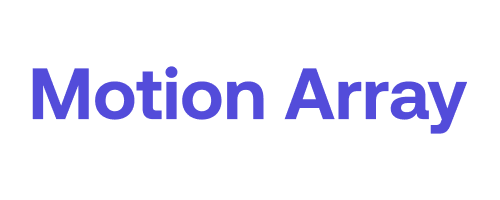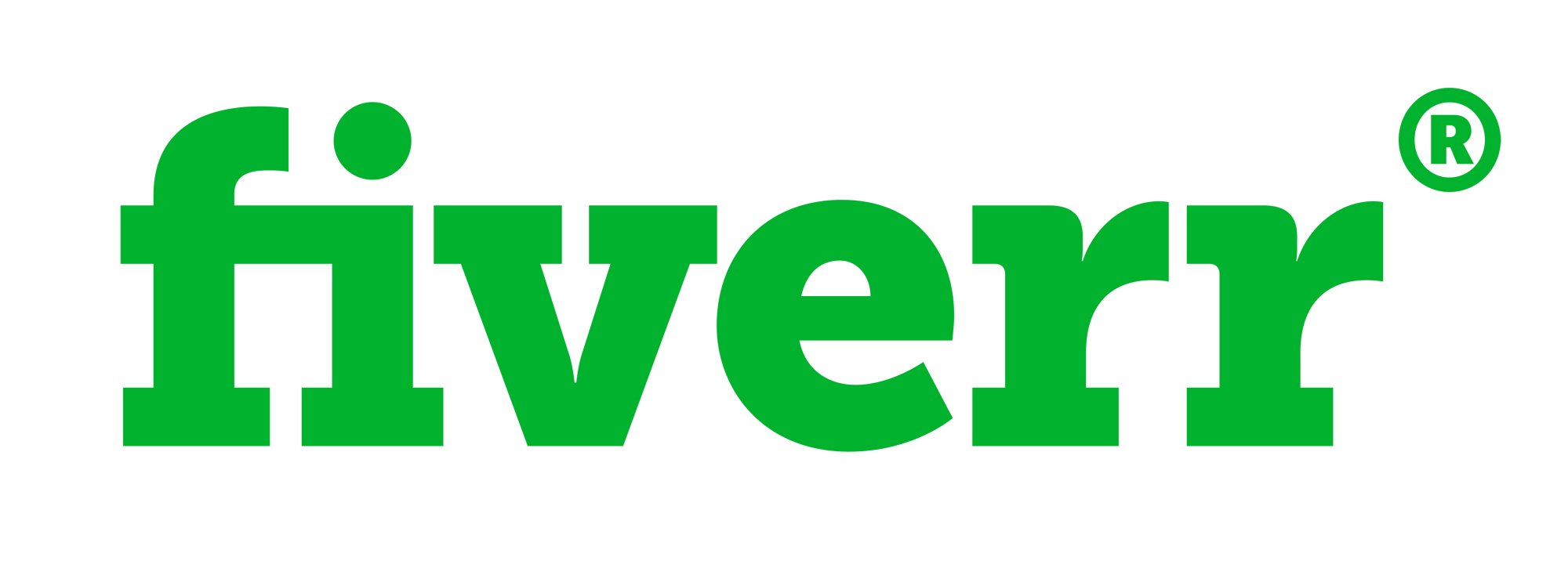How to Make Intro and Outro for Video
• Example of how to write brief with essential free and paid tools and basic questions
Overview
The primary purpose of creating an intro and outro is to animate key information, which often includes displaying a logo along with necessary details such as the name of the video or relevant contact information. Additionally, intros and outros can feature animated backgrounds that incorporate video footage, motion graphics, and dynamic visual elements to enhance the overall presentation.
The tasks involved in creating intros and outros typically encompass a range of activities, including the development of both 2D and 3D animations, as well as video editing to seamlessly integrate various elements. At its core, this process involves animating a logo or text with synchronized musical accompaniment to create a visually engaging introduction or conclusion for the video content.
Content creators have access to a plethora of ready-made templates, both paid and free, that can be readily customized to suit specific requirements. These templates serve as valuable resources for expediting the production process, allowing creators to quickly adapt and modify pre-existing designs to fulfill their desired objectives. Whether it's a sleek and professional intro for a corporate video or a vibrant and dynamic outro for a YouTube channel, there are templates available to suit a wide range of preferences and styles.
Moreover, advanced software tools and platforms facilitate the creation of intros and outros, offering a comprehensive suite of features for designing, animating, and rendering visual content. From industry-standard software like Adobe After Effects and Cinema 4D to user-friendly online platforms with drag-and-drop interfaces, creators have access to a diverse array of tools to bring their creative vision to life.
In essence, the creation of intros and outros involves a blend of artistic creativity, technical proficiency, and effective communication to deliver impactful visual content. Whether utilizing templates or crafting custom animations from scratch, the end goal remains the same: to captivate the audience's attention, reinforce brand identity, and leave a memorable impression that enhances the overall viewing experience.

Goals and Objectives
The creation of an intro and outro serves to animate key information, often encompassing elements such as logos, text, and essential details. These segments of a video can also feature animated backgrounds incorporating dynamic visual elements, such as video footage and motion design elements, to enhance engagement and visual appeal.
The tasks involved in creating intros and outros are diverse and may include the development of both 2D and 3D animations, as well as video editing to seamlessly integrate various elements. Typically, this process entails animating a logo, text, or other branding elements, accompanied by musical accompaniment to create a cohesive and visually engaging introduction or conclusion for the video content.
An array of ready-made templates is available to streamline the production process, catering to various styles and preferences. These templates, accessible in both paid and free options, offer a convenient solution for quickly customizing and adapting pre-existing designs to meet specific project requirements. Whether seeking a professional and polished intro for a corporate presentation or a dynamic and eye-catching outro for a YouTube channel, these templates provide a starting point for creating compelling visual content.
Moreover, the availability of templates extends beyond just visual elements; there are templates designed to synchronize seamlessly with musical accompaniment, simplifying the process of integrating audio elements into intros and outros. This integration ensures a harmonious blend of visual and auditory components, resulting in a cohesive and impactful presentation.
In essence, the creation of intros and outros involves a combination of artistic creativity, technical expertise, and strategic planning to deliver compelling visual content that captivates and resonates with the audience. Whether utilizing ready-made templates or crafting custom animations from scratch, the goal remains consistent: to create an introduction and conclusion that effectively reinforce brand identity, engage viewers, and leave a lasting impression.
6 Best Production Management Software for Video & Film (2022)

Film and video productions are hectic! Having the right production management software sets the tone for how organized and efficient your shoot will be. Yet with so many options out there, how will find the one to fit your needs? Look no further.
Read moreTOP 10 Project Manager Tools for Videographers

When it comes to project management tools you want something that is easy to access by all team members, is affordable, and helps streamline your workflow quickly and efficiently. As a videographer, the right project management tool can help you stay on schedule, focus on the key aspects of the project, and cut out time wasted on communication issues and more. The following project management tools can assist in the planning, shooting, organizing, and execution of any video project you are working on.
Read moreVideo Intro and Outro Project Brief
This template provides a structured format for outlining the key aspects of a video intro and outro project, including its goals, target audience, branding guidelines, style preferences, technical requirements, and timeline.
| Section | Description |
|---|---|
| Project Title | [Your project title] |
| Project Description | [Brief description of the project goals and main purpose of the video intro and outro] |
| Target Audience | [Description of the target audience, including demographics, interests, and preferences] |
| Branding Guidelines | [Description of the brand's visual identity, including logo design, colors, and typography] |
| Style Preferences | [Description of the desired style (e.g., modern, corporate) and any specific visual or audio elements to be included] |
| Technical Requirements |
|
| Timeline | [Proposed timeline for concept development, editing, revisions, and finalization] |
| Delivery | [Method of delivering the final intro and outro videos, such as email, file sharing platform, or cloud storage] |
Target Audience
The target audience for intros and outros comprises the specific demographic or group of individuals for whom the content is intended and with whom the intro and outro are being crafted to resonate. Identifying the target audience is a crucial step in the video production process as it informs the tone, style, and messaging of the intro and outro.
To effectively engage the target audience, it's essential to understand their demographics, interests, preferences, and behaviors. This can involve conducting market research, analyzing audience demographics, and gathering insights through surveys or feedback mechanisms.
Once the target audience is identified, the intro and outro can be tailored to appeal to their preferences and resonate with their interests. For example, if the target audience is young adults interested in technology, the intro and outro may incorporate modern visuals, dynamic animations, and relevant music to capture their attention.
Additionally, the language, tone, and messaging used in the intro and outro should align with the preferences and communication style of the target audience. This ensures that the content feels relatable and speaks directly to their needs and interests.
Furthermore, considering the viewing habits and behaviors of the target audience is essential when determining the length and placement of intros and outros within the video content. For instance, if the target audience prefers short, concise content, the intro and outro should be brief and impactful to maintain their attention.
By understanding the target audience and tailoring the intro and outro accordingly, content creators can maximize engagement, foster a connection with the audience, and ultimately achieve the desired objectives of the video content.
7 Tools to Help You Learn About Your Target Audience
Knowing your brand’s target demographics can help you create better audience profiles and reach them on the platforms and in the places they frequent most. There are a lot of ways to dig into the demographics of your current visitors and your target audience, and you may already have tools installed to start mining for information. Here are seven tools you can use to learn more about who your current visitors and customers are, as well as the audience you want to attract.
Read more8 Tools to Better Understand Your Target Audience

We read a lot in the SEO world about things like keyword research , analyzing your competitors, and other things to get traffic to your site. But I don’t see information very often about deciding who your target audience is and how to make sure your keyword choices will actually reach them. This is one way to take your keyword research to the next level, and it’s well worth the effort. So rather than trying to guess whether your SEO or PPC ads are appearing in front of the right people, here are some tools you can use to make sure.
Read moreReferences
References for intros and outros for videos, especially those featuring screensavers or similar visual elements, can be readily found on the internet in various styles and formats. These references serve as valuable sources of inspiration and guidance for content creators seeking to craft compelling introductions and conclusions for their videos.
One common source of inspiration is video platforms such as YouTube, Vimeo, or specialized video production websites, where a vast array of intros and outros can be found across different genres and themes. These platforms often feature intros and outros from movies, TV shows, web series, and online tutorials, providing content creators with a rich pool of ideas and styles to draw inspiration from.
Additionally, intros and outros can also be found in movies, cartoons, and video games, where they are used to set the tone, introduce characters or storylines, and provide closure to the narrative. Analyzing intros and outros from these mediums can offer insights into effective storytelling techniques, visual design, and pacing, which can be adapted and applied to video content creation.
Furthermore, static images or illustrations can serve as inspiration for creating animated splash screens or title sequences. By adding motion graphics, transitions, and effects to static images, content creators can transform them into dynamic and visually engaging intros and outros that capture the audience's attention and enhance the overall viewing experience.
Ultimately, drawing inspiration from a diverse range of sources, including online videos, movies, cartoons, and static images, allows content creators to explore different styles, techniques, and creative approaches to crafting intros and outros that resonate with their audience and effectively complement their video content.

Vimeo, Inc. is an American video hosting, sharing, and services platform provider headquartered in New York City. Vimeo focuses on the delivery of high-definition video across a range of devices. Vimeo's business model is through software as a service.
Google rank: 4.4
YouTube is an American online video sharing and social media platform headquartered in San Bruno, California. It was launched on February 14, 2005, by Steve Chen, Chad Hurley, and Jawed Karim. It is owned by Google, and is the second most visited website, after Google Search.
Google rank: 9.4
Motion Graphic Design
When crafting an introduction (intro) and conclusion (outro) for a video, it often involves the creation of a short video segment. This segment serves to set the tone, introduce the content, and leave a lasting impression on the audience.
To create such a video from scratch, several steps are typically involved. Firstly, it's essential to gather the necessary materials. This may include existing assets such as logos, branding elements, or any visuals relevant to the video's theme or message. These materials can either be sourced from an organization's existing collection or obtained externally.
If the required materials are not readily available, they may need to be created from scratch. This involves the design and development of elements such as logos, graphics, animations, or any other visual components required for the intro and outro. This process often requires the expertise of graphic designers, animators, or multimedia specialists who can bring creative concepts to life.
Once all the necessary materials are collected or created, the next step is to assemble them into a cohesive video sequence. This involves arranging the visuals, adding transitions, effects, and any accompanying audio elements such as music or voiceovers. The goal is to create a visually engaging and impactful intro and outro that captivates the audience's attention and reinforces the video's message.
Throughout the process, attention to detail is crucial to ensure consistency with branding guidelines, visual aesthetics, and overall video quality. Additionally, considerations such as video length, pacing, and alignment with the video's content should also be taken into account to create a seamless viewing experience for the audience.

VideoHive is an online stock file with a huge library of video and motion graphics. Produce slick videos and motion graphics with a huge range of stock footage, After Effects templates for logos, intros and more, as well as Apple Motion templates, etc.
Google rank: 9

Bring your videos to life with dynamic animations. Discover professionally-designed, easy-to-use motion graphics video templates for all your projects, ready to use in Premiere Pro. Quickly find what you’re looking for with search filters — everything from titles to transitions, backgrounds, overlays and more.
Google rank: 6.4
Sound Design
Music and sound effects are integral components of the final stages in creating an intro and outro for a video. These elements play a crucial role in enhancing the overall impact and engagement of the video content.
When it comes to incorporating music into intros and outros, creators have several options. They can either compose original music tailored specifically for the video, providing a unique and personalized soundtrack that complements the visual elements. Alternatively, creators can opt to use pre-existing compositions, selecting from a wide range of royalty-free music libraries or licensing tracks from music producers.
Similarly, sound effects serve to accentuate key points, add emphasis, or simply provide entertainment value to the intro and outro. Whether it's the sound of a swoosh for a transition, a click for a logo reveal, or ambient background noise to create atmosphere, sound effects play a significant role in creating a dynamic and immersive viewing experience.
On the internet, creators have access to a plethora of resources for sourcing both original music and sound effects. They can choose to commission custom soundtracks from composers or browse through online marketplaces offering a vast selection of paid and free audio materials.
Ultimately, the selection of music and sound effects for intros and outros should align with the tone, style, and message of the video content. Whether opting for original compositions or utilizing pre-made audio assets, the goal is to create a cohesive and harmonious audio-visual experience that resonates with the audience.
Explore The Best Music. Get Unlimited Downloads. Enjoy Your Creative Freedom. Start Now! Discover 1000's of New Songs. Amazing Royalty-Free Music for Video. 100% Copyright Free. 2022's Talented Composers. 1000s of New Songs.
Google rank: 9

What does AudioJungle mean? AudioJungle is part of Envato Market. At AudioJungle you can buy and sell royalty-free music and sound effects that are completely Podsafe for just a few dollars, which includes a Buyer Fee. The site is home to a bustling community of audio composers and producers.
Google rank: 6.4
Budget
The budgeting process for intro and outro videos in freelancing typically involves various pricing models tailored to the specific requirements of the project. These models may include time-based billing, fixed pricing, or alternative forms of compensation, depending on the preferences of both clients and freelancers.
When it comes to recording video footage using a camera, the pricing structure often revolves around a time-based rate. This rate may encompass the duration of the recording session, inclusive of any necessary equipment usage and studio rental fees. Clients and freelancers may negotiate the hourly or daily rate based on factors such as the complexity of the shoot, the location, and the equipment requirements.
In the realm of motion graphics, payment is commonly determined based on the duration of the video content. Freelancers may charge a rate per second of animation, taking into account factors such as the intricacy of the graphics, the level of detail, and the overall complexity of the project. This pricing model allows for flexibility and transparency, ensuring that clients are billed according to the specific scope and scale of the animation work.
Additionally, freelancers and clients may explore fixed pricing arrangements for intro and outro videos, whereby a predetermined fee is agreed upon for the entire project. This fixed price may encompass all aspects of production, including scripting, storyboarding, animation, sound design, and final editing. Fixed pricing offers clarity and predictability in terms of budgeting and allows clients to have a clear understanding of the total cost upfront.
Furthermore, alternative forms of remuneration may also emerge within the freelancing community, reflecting the evolving nature of the industry. These alternative models may include revenue-sharing agreements, milestone-based payments, or performance-based bonuses, wherein freelancers receive compensation based on the success or performance of the video content.

Upwork connects businesses with independent professionals and agencies around the globe. Where companies and freelancers work together in new ways that .
Google rank: 4.4
Join the thousands of entrepreneurs who are launching their contests every week and harnessing the awesome power of crowdsourcing.
Google rank: 6.4

Another staple competitor analysis tool for SEO is Ahrefs’ site explorer, which allows you to check any URL’s top organic keywords. Additionally, you get a rough estimate of how much traffic a competitor receives on those keywords.
Google rank: 9.4

